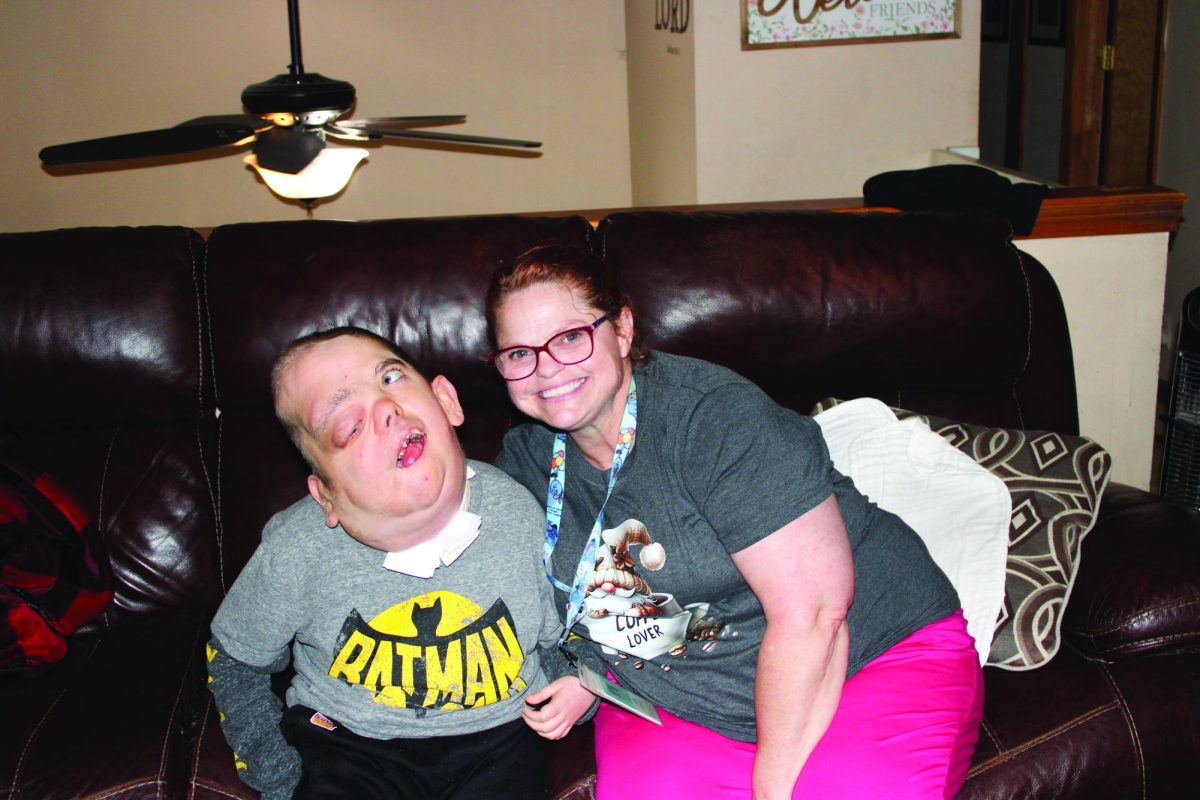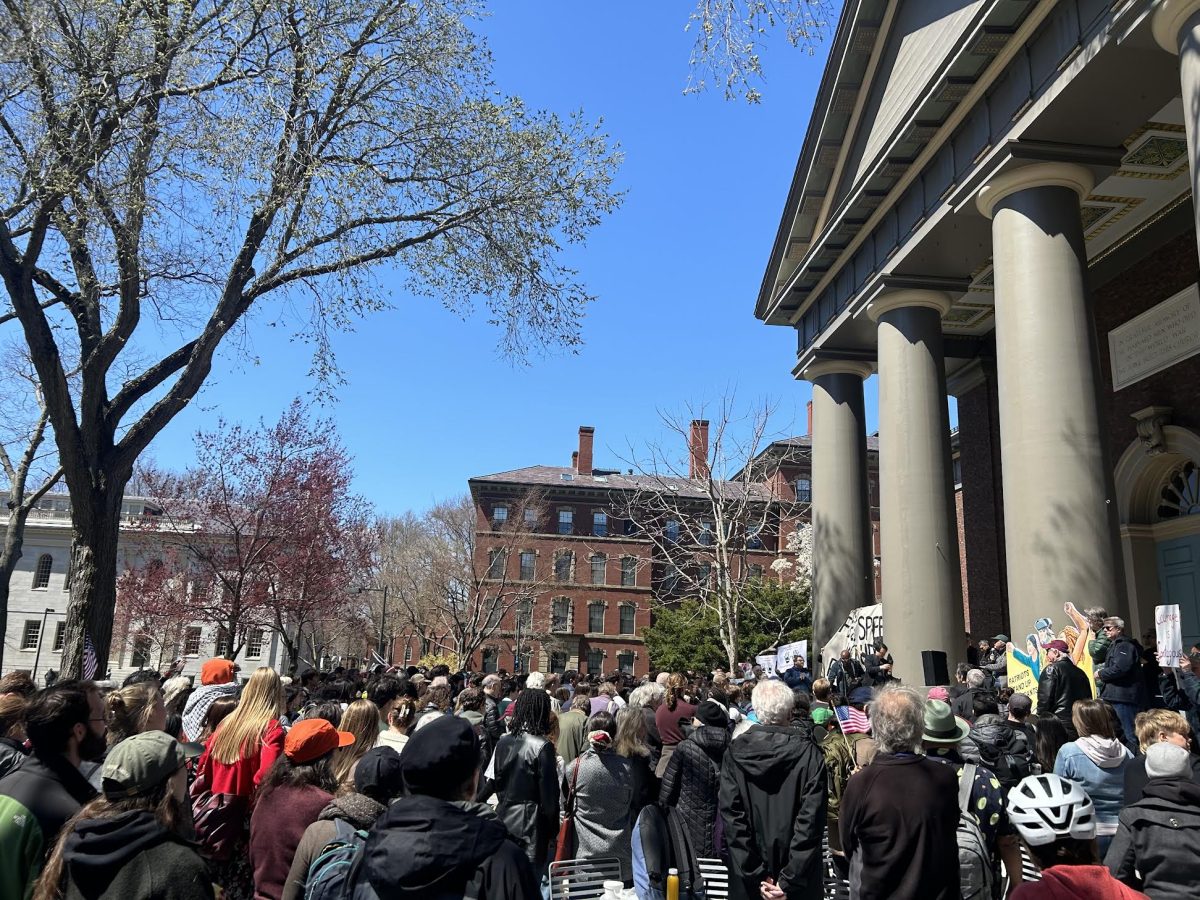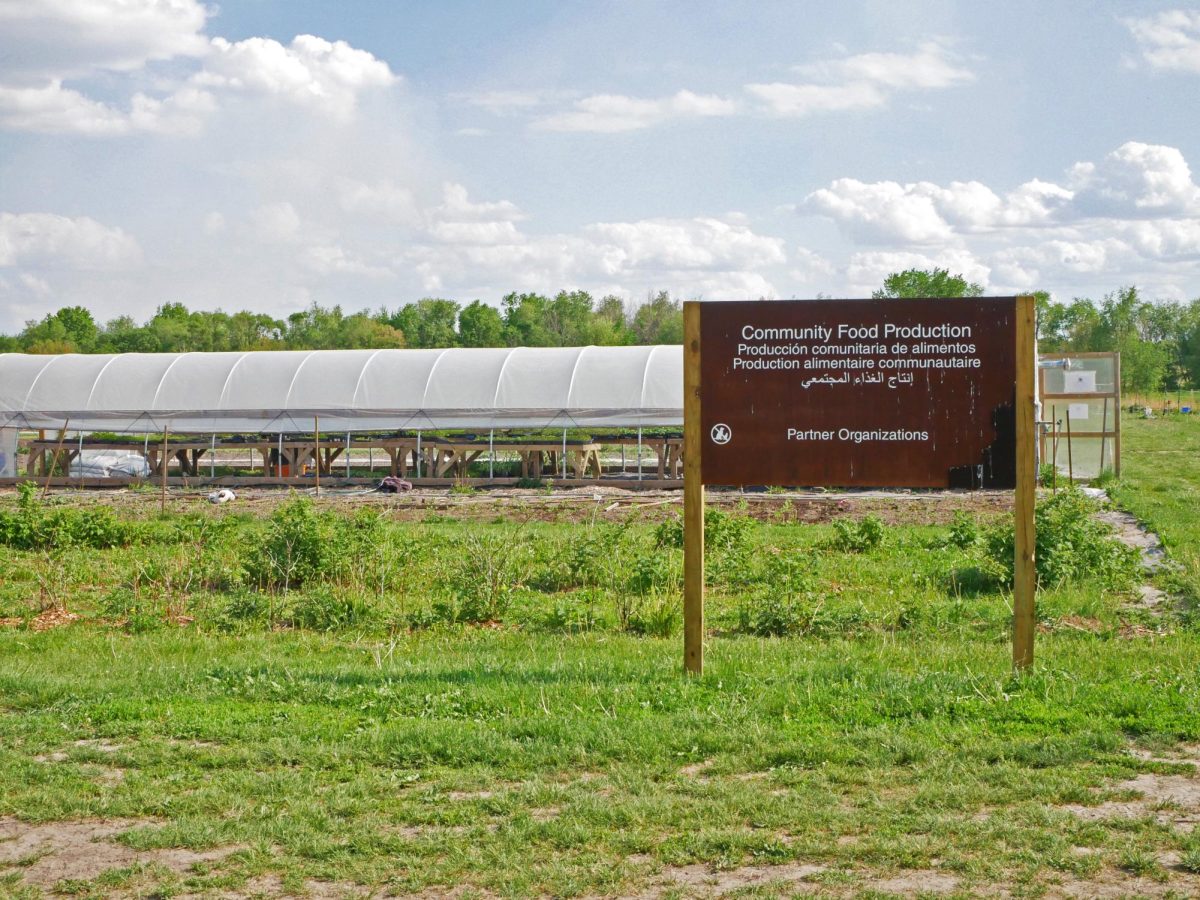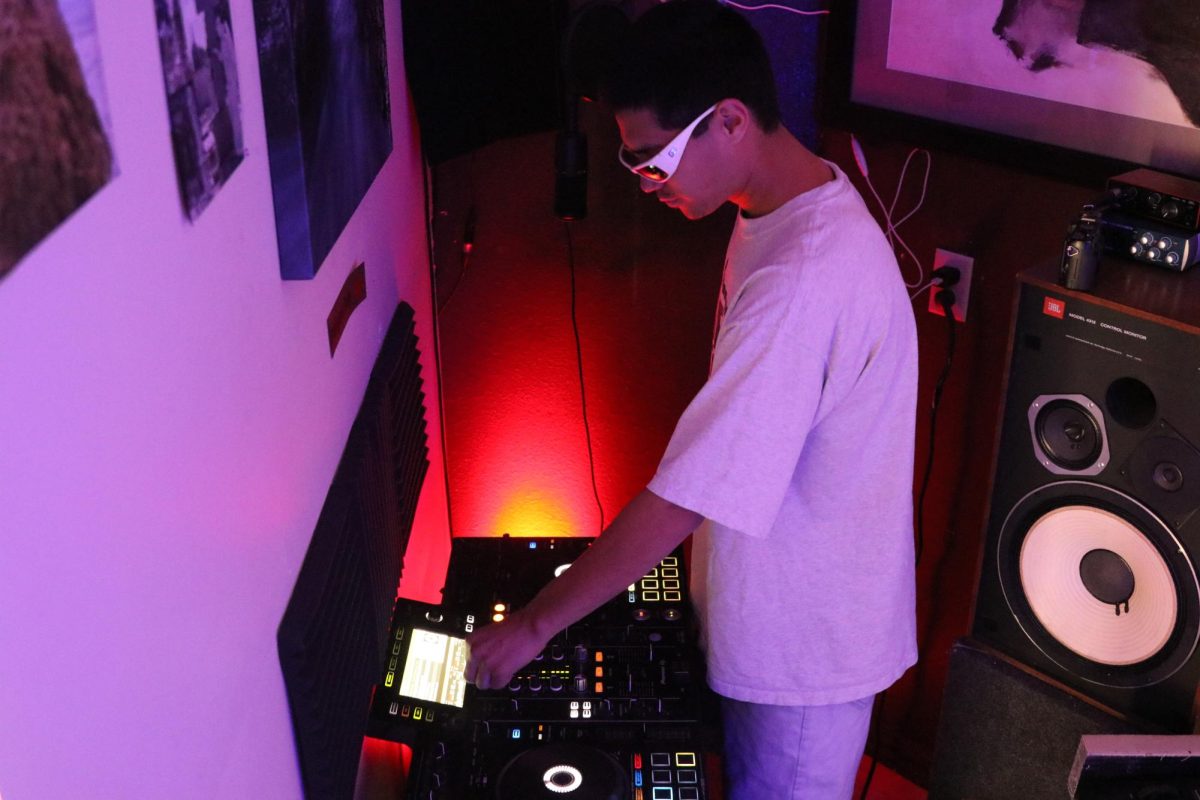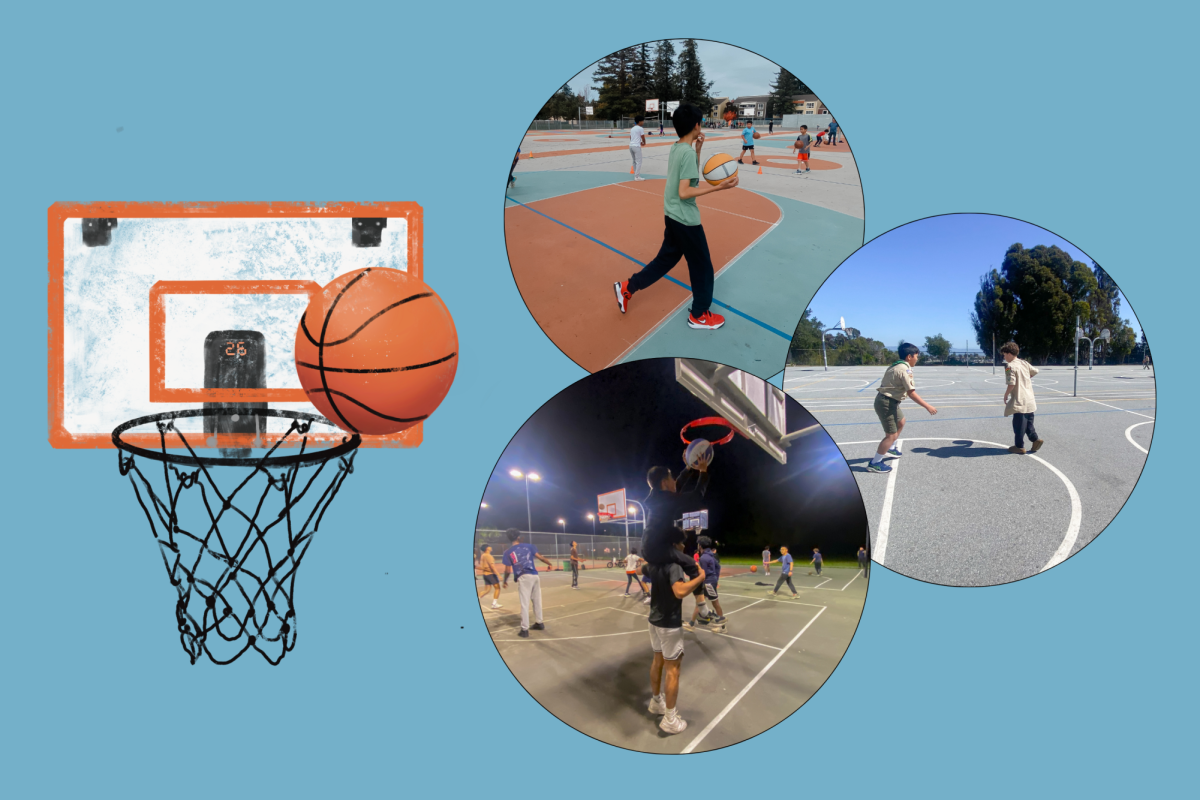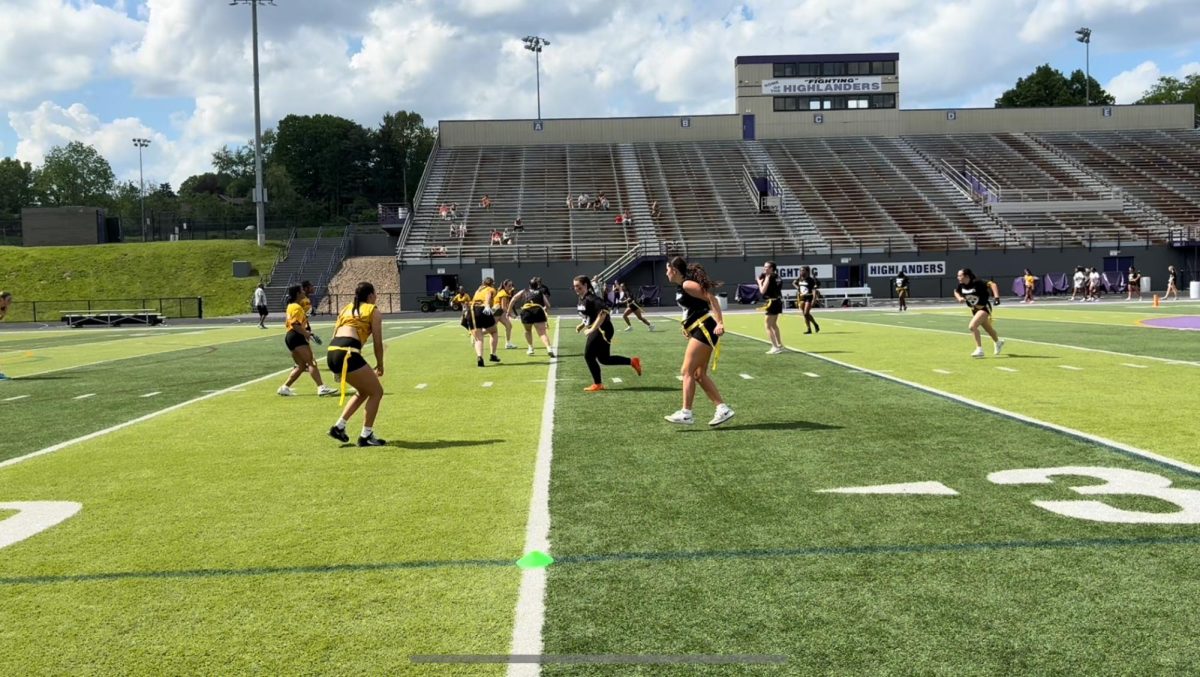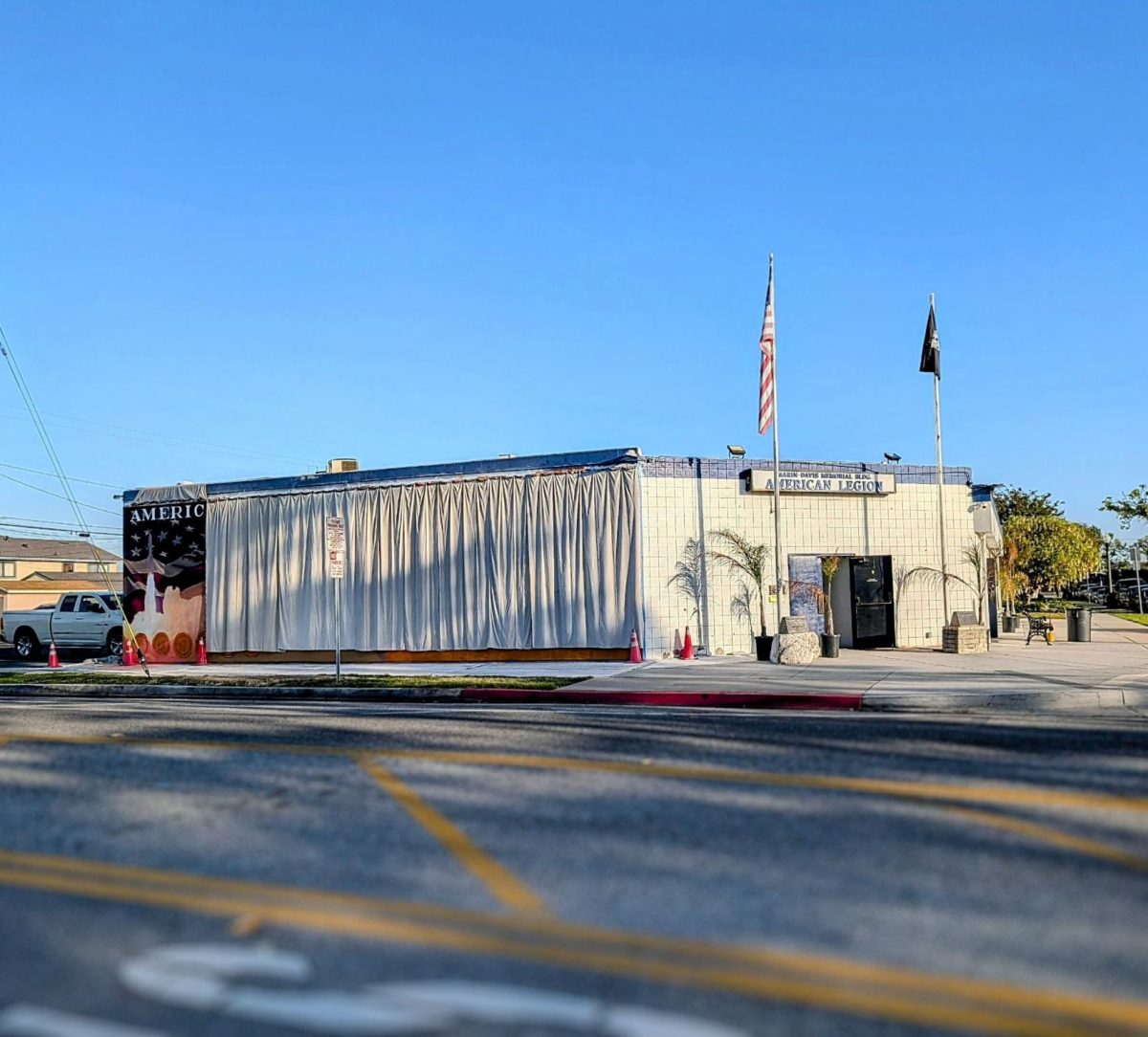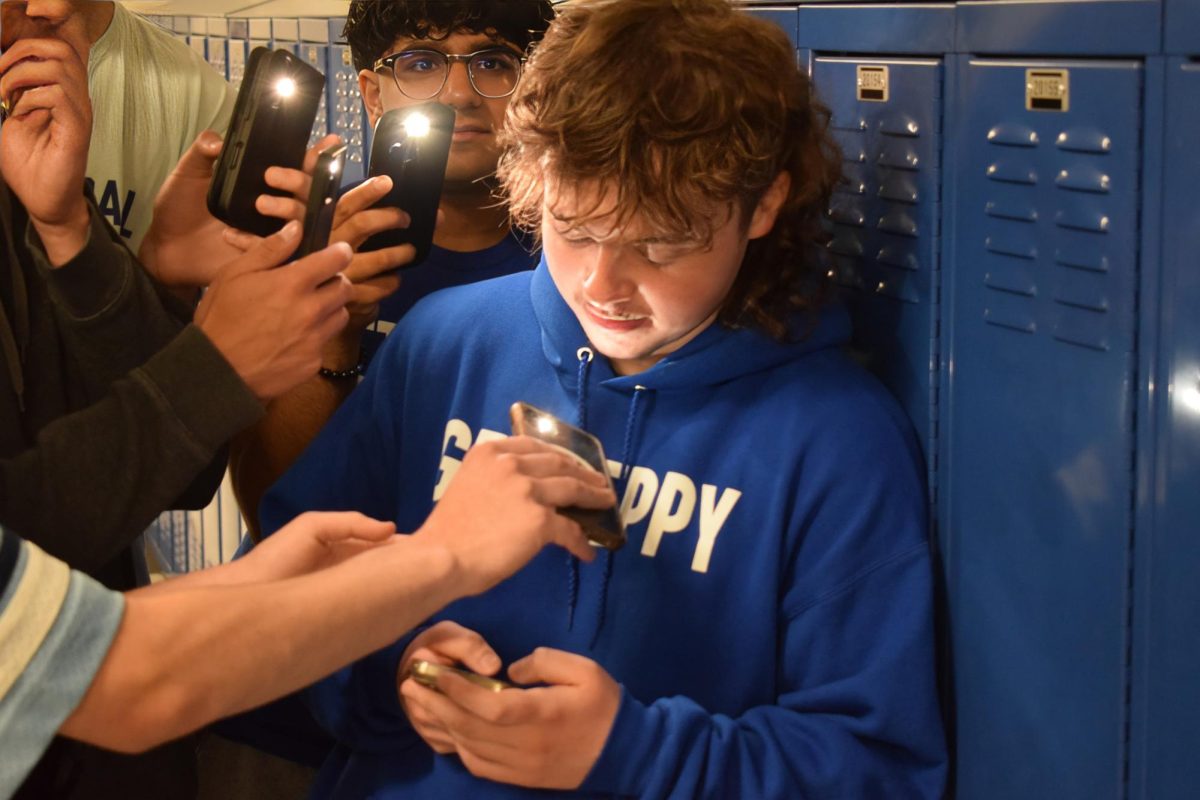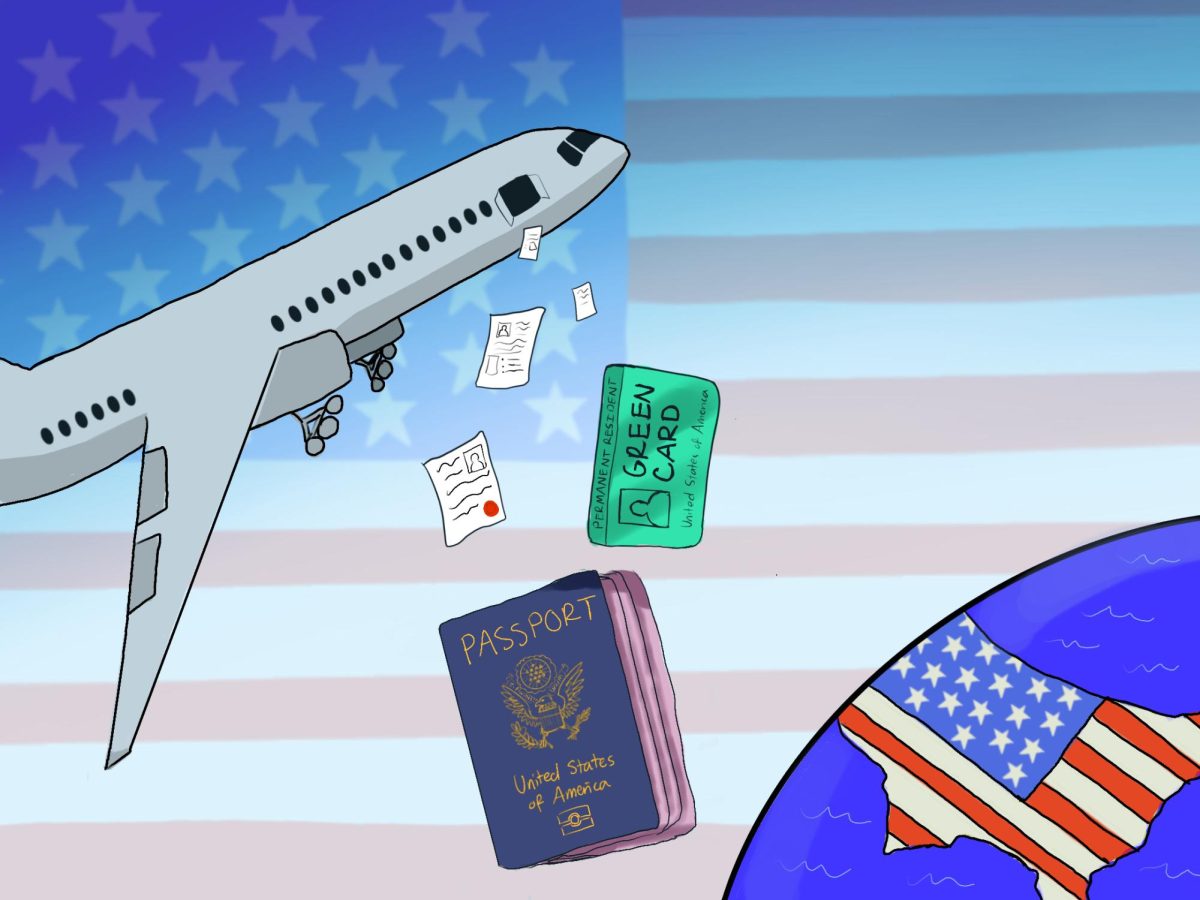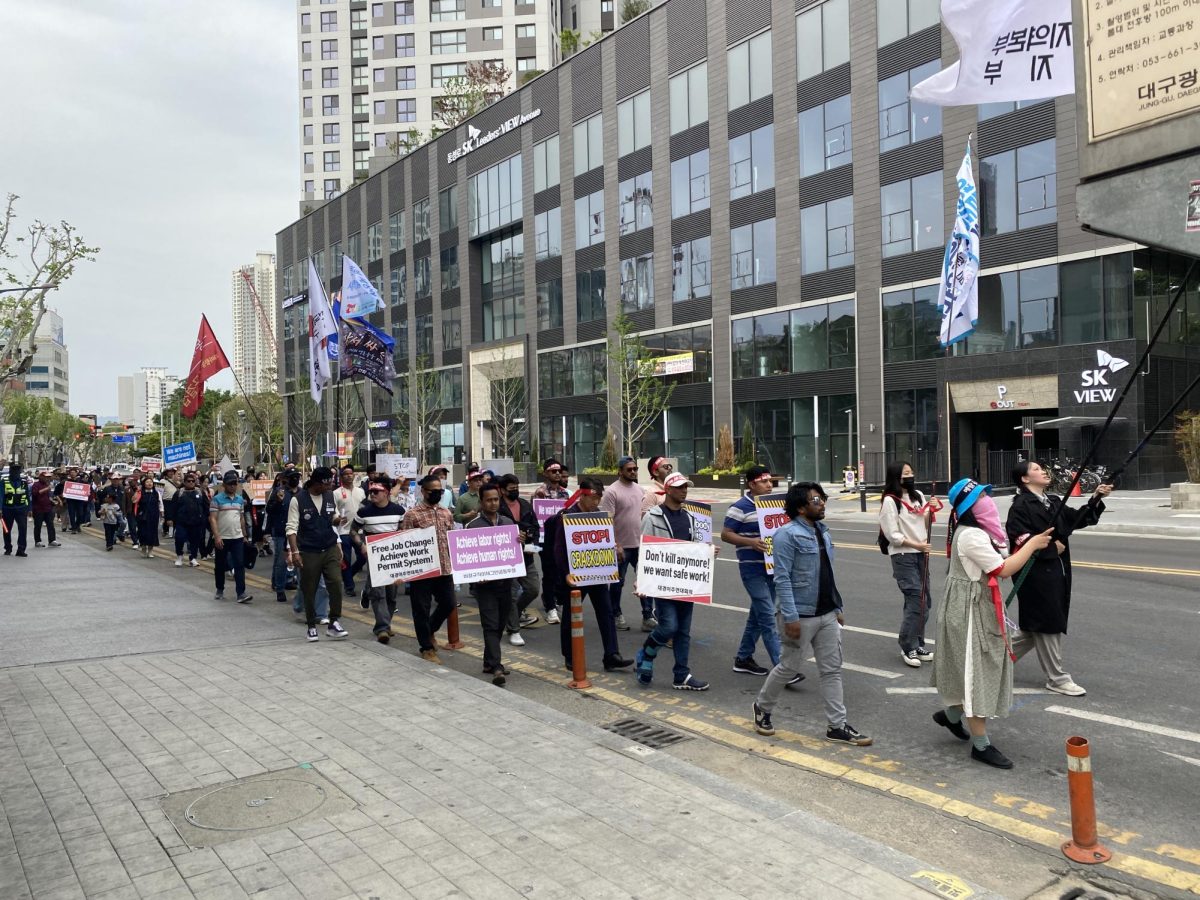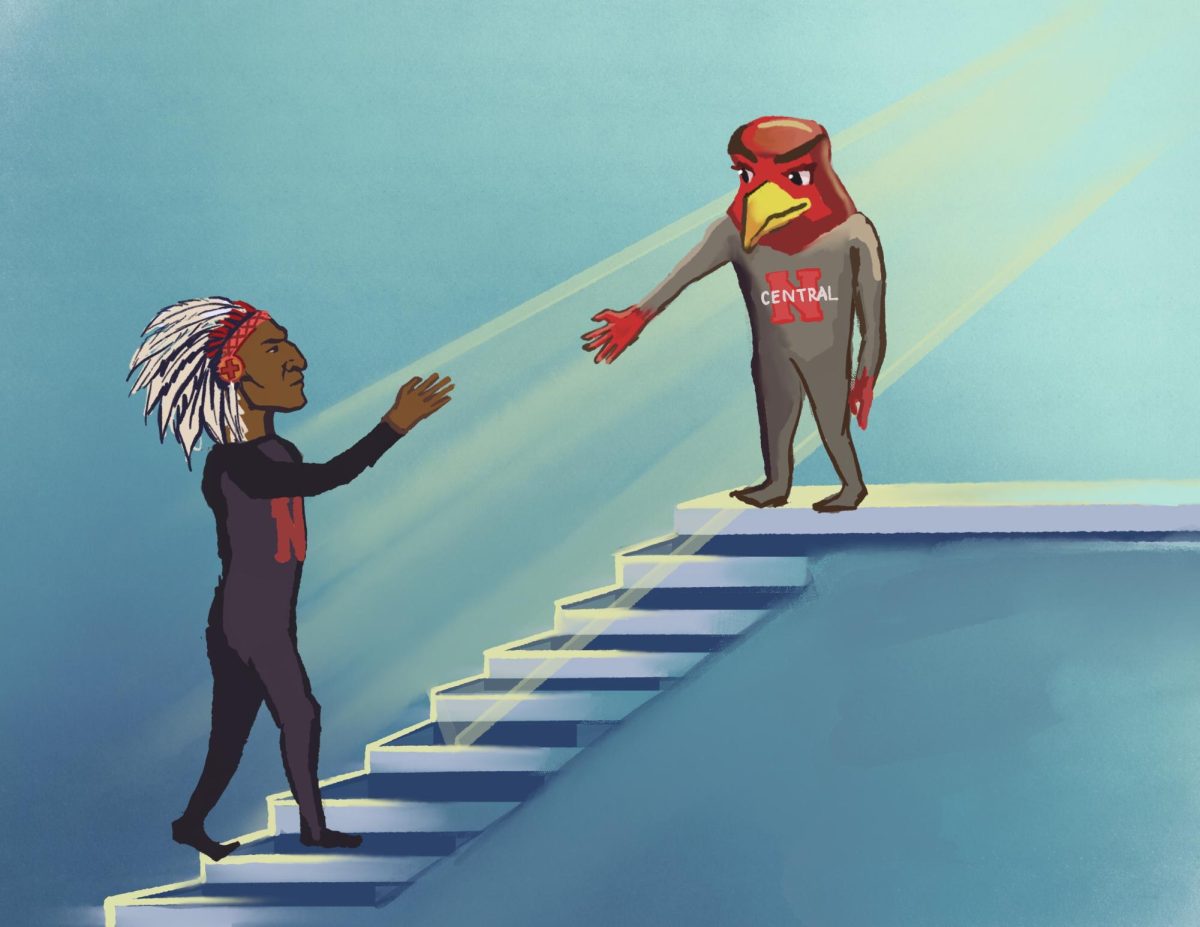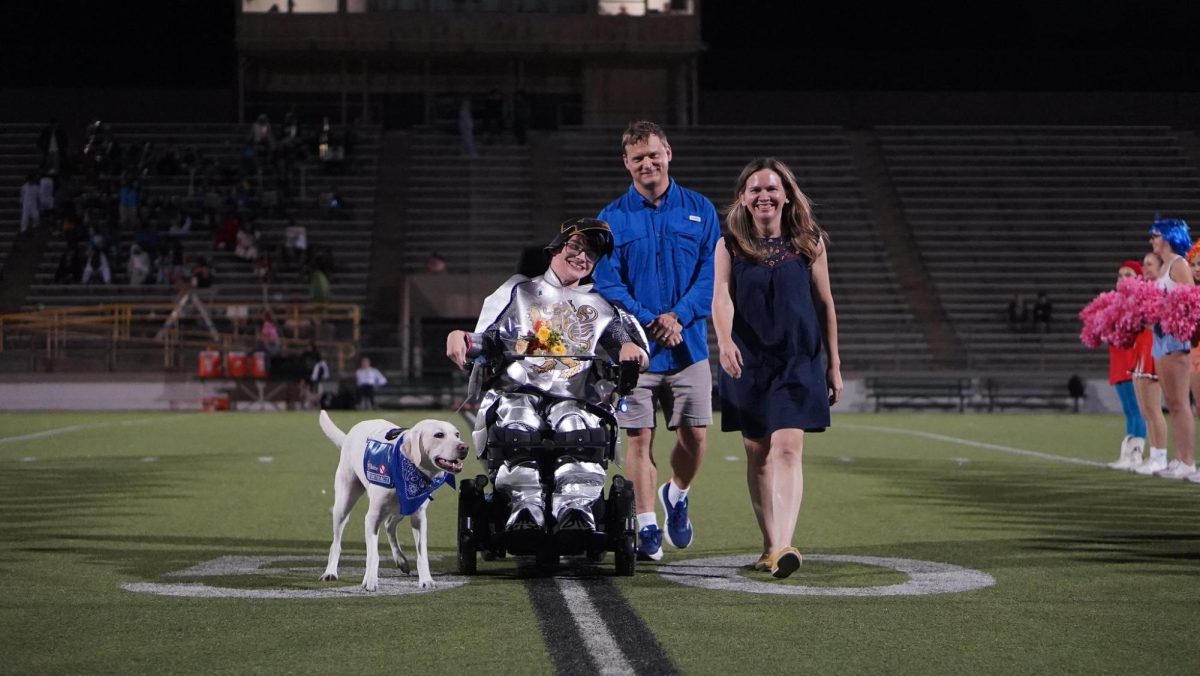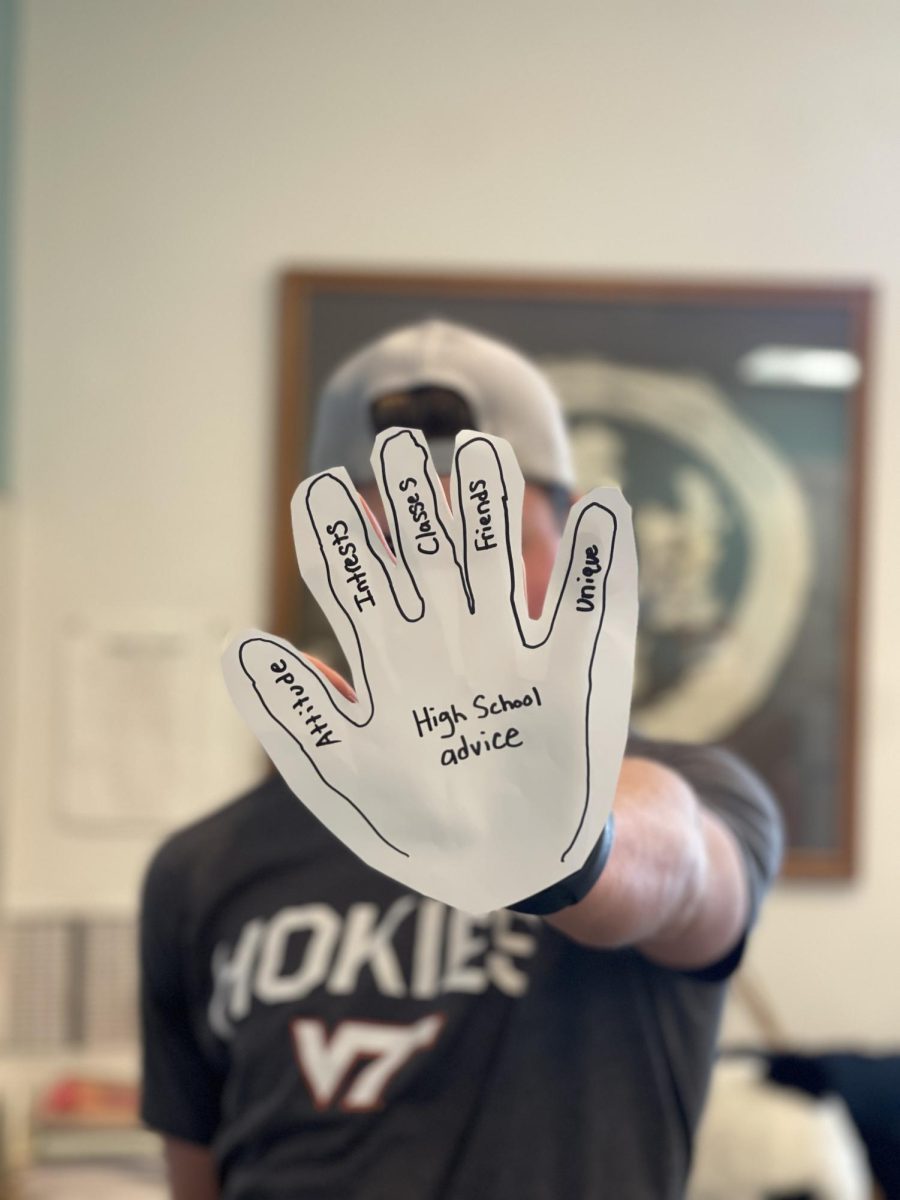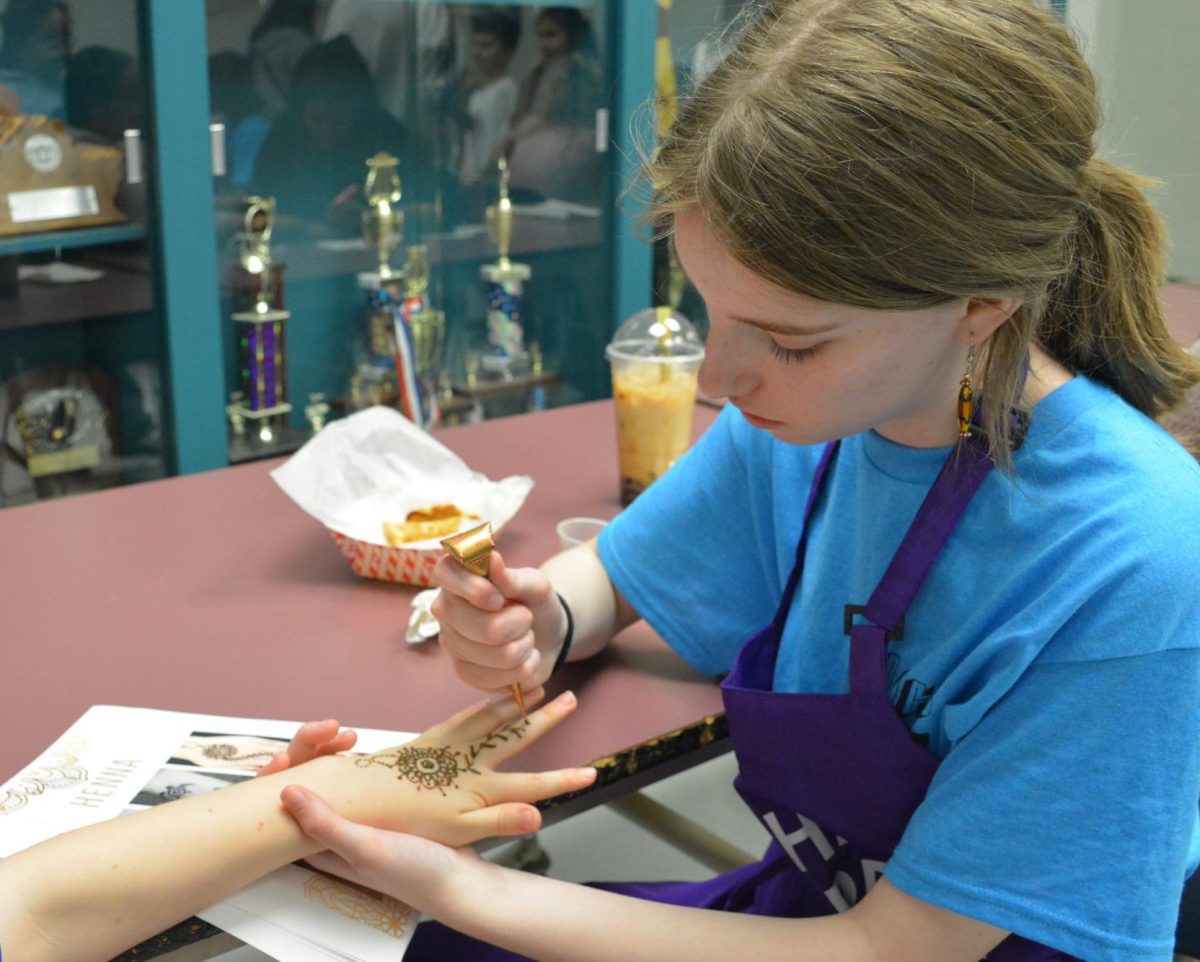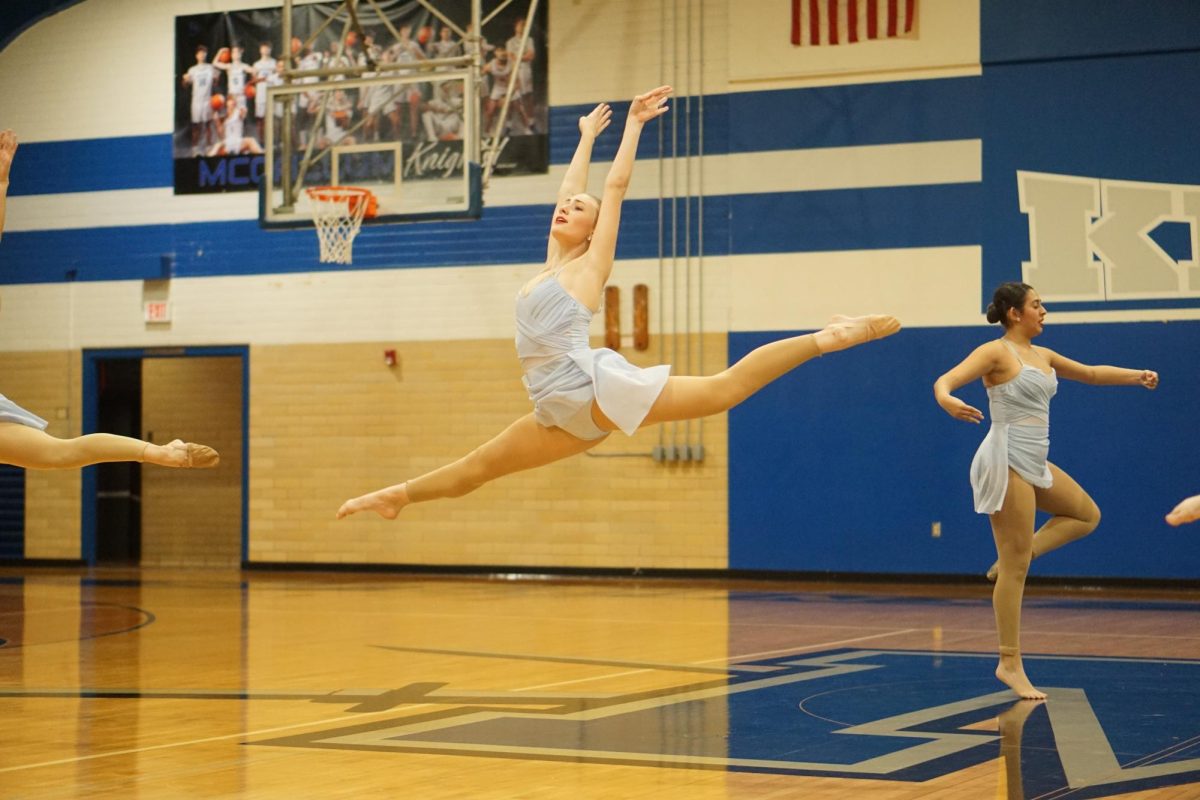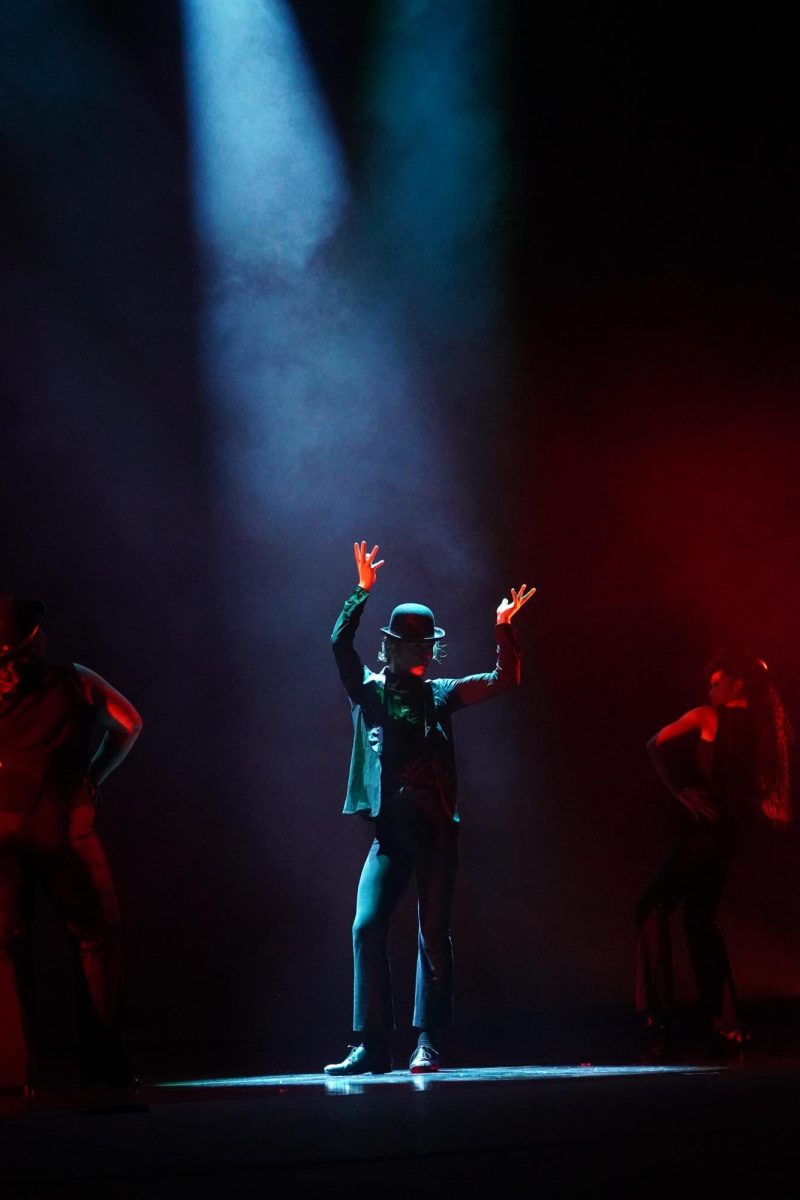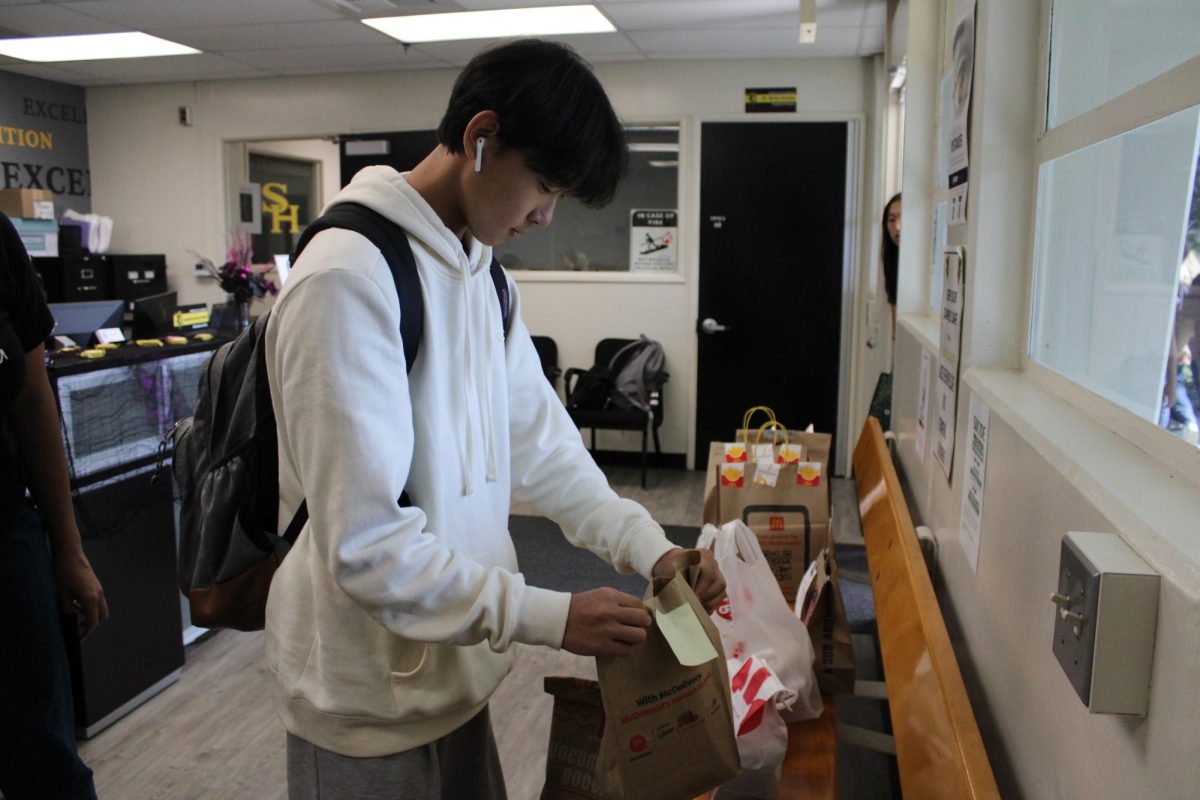The line usually starts forming at 12:52 p.m. — two minutes before the start of lunch.
Students stand behind each other alongside one of the wings on campus.
By the time the bell rings to signal the beginning of the 30-minute lunch period, that small number will grow like cars stacking up toward a red light; the rate of increase can also be measured as approximately five students every 30 seconds.
This is not the lunch line to the cafeteria. Nor is it the line to the Roundhouse.
Instead, this pack that averages 40 outside Room 7, the attendance office, assembles to pick up ordered meals via DoorDash or Uber Eats — a trend that has significantly grown since the COVID-19 pandemic, as more students, especially underclassmen, have come to rely on food delivery services for their lunches.
“I don’t have time in the morning to make lunch for myself, and I don’t really like the taste of school lunch,” said sophomore Sofie Ciudadreal, who uses DoorDash — the delivery service that first opened in 2013 — since she was a freshman.
With a $100 budget a week from her dad, Ciudadreal said she prefers to order enough food to feed her and her friends as well.
“I would still be ordering if the pandemic never happened because of how I don’t have time in the morning to make lunch for myself,” she said. “My dad is completely fine with me buying food for other people as long as it’s close friends and I’m not buying food that’s super expensive.”
GEN Z-ERS FUEL THE RISE OF FOOD DELIVERY
Eight-year staff member and student and pupil service clerk Leslie Rains was a campus supervisor when she noticed the trend emerge in the previous school year.
“I would guess that because we all got accustomed to using DoorDash [during the pandemic] and having food delivery pickup,” Rains said. “It just rolled over and became such a convenience for everybody that everybody just started turning to DoorDash versus leaving campus or having parents deliver food.”
Results from an Accolade online poll from Friday-Wednesday, Feb. 21-March 5, based on 130 responses, revealed that ordering food from an app or online service remains a niche option. A majority at 55% still pack lunch from home; 19% of those responding showed they prefer the free school lunch.
And so while 4% selected the option of going off campus to get their stomachs filled, 17% of responders don’t eat during lunch, and 6% use an online delivery service to order food to Room 7.
But the situation looks different on a national scale.
According to a June 2019 Washington Post article, teens began to turn to delivery services such as DoorDash, Grubhub or Uber Eats for their school lunches even before the COVID-19 pandemic broke.
“Students in middle and high schools across America thought they had found a way around cafeteria ‘cuisine’ and boring brown-bag lunches: just hit up delivery services such as DoorDash, Grubhub or Uber Eats and get takeout food sent to their schools,” according to the story.
According to another online article posted last December in Mother Jones, DoorDash reported in the first quarter of 2024 650 million orders, a 21% jump from the previous year. The top food item it delivered in 2023 was french fries, followed by chicken quesadillas.
It’s no wonder that in that same article, the author coined a term to describe these youths, the “DoorDash generation.”
Junior Elias Vorathavorn considers himself among that group, as he has been DoorDash-ing food using money from his job since his freshman year.
“DoorDash was popularized during the pandemic, and I saw the good benefits it has, so I use it at school to save time,” said Vorathavorn, who orders food to school around once every other week and spends approximately $20-25 on each order. “But I probably wouldn’t have ever DoorDash-ed if there was no pandemic.”
The majority of students ordering their lunches using online delivery services seem to be underclassmen, said senior Ava Raddatz, who has been using Uber Eats since her sophomore year and has paid for her meals using money from past jobs in previous years and her current job.
“Most upperclassmen go off campus during lunch because there’s so many of us with cars,” said Raddatz, who prefers ordering food over leaving the school to ensure she is on time to her next class.
FROM CHAOS TO CONTROL: THE ORIGINS OF FOOD DELIVERY RULES
Although the media have reported on teen app orders for meals as early as a year before the March 2020 lockdowns, the fact that they didn’t stop has prompted campuses nationwide to ban outside food orders and deliveries.
Brea Olinda and Fountain Valley high schools, for example, are among such campuses.
Sunny Hills, however, remains one of the few that still caters to the DoorDash generation. The main requirement is that orders must be delivered to Room 7.
That has led to some levels of frustration for the DoorDashers and Uber Eaters.
“It would be much more efficient if they just allowed more people in at a time to get their food,” said freshman Logan Newman, who often DoorDashes Chick-fil-A using his parents’ money with their permission. “And it is kind of annoying because I might spend five or 10 minutes waiting for my food.”
With more students turning to this option, Sunny Hills didn’t always have this system for food deliveries. But school officials in Room 7 said they had to establish “unwritten rules,” especially since students started reporting that their ordered meals got stolen.
Meanwhile, principal Craig Weinreich said he has no plans to change the system or follow what neighboring campuses have done in Orange County.
School nurse Delfina Soto is among those in Room 7 who now help run the Monday-Friday operation of ensuring that theft of ordered meals is curbed.

Soto said when she began working here three years ago, the food delivery police wasn’t a responsibility she had expected to inherit.
“It’s not even my job,” the nurse said. “I just do it to help [the students] out and because it gets chaotic in here with everybody rushing in looking for their food.”
Sophomore Katelyn Ly said she has been using DoorDash for approximately a year but only sparingly, at a pace of once every two weeks, spending around $20 on an order.
One day last August, Ly said she had ordered lunch from Raising Cane’s Chicken Fingers and asked her driver to leave her food in Room 7, but the driver dropped off the food at a table near the main parking lot and sent Ly a picture of it for proof.
When she went to pick up her food, it was gone, the sophomore said.
“It made me feel like I wasted my money,” she said. “I really don’t know who would have stolen it because there were no students out there. … I was really upset and hungry, but I don’t blame the driver or the school.”
Ly did not notify a school official about the mishap since she felt there was nothing they could do about it.
However, other students experiencing similar robberies did.
After hearing from students who were victims of stolen delivered meals, Soto said she decided to do something about it. She gave the following account of how the process works:
- When a food deliverer arrives on campus, the driver is required to bring the lunch into Room 7, where it is then placed on the bench on the side of the room
- When the lunch bell rings at 12:54 p.m., Soto or another worker stands at the right door, asking students to show their online food order confirmation on their phone screens
- After the student shows proof, Soto hands them their lunch
Rains added these additional rules:
- Students may only pick up their food in Room 7 after the bell rings for break or lunch.
- If students are caught picking up their lunches anywhere other than Room 7, the consequence is a detention or Saturday school, depending on whether or not the student was aware of the policy.
“If they’re caught going out to the curb or something, they would get [the consequence],” said Rains, who has only given approximately three or four detentions. “But I think kids are really compliant on having it delivered here.”
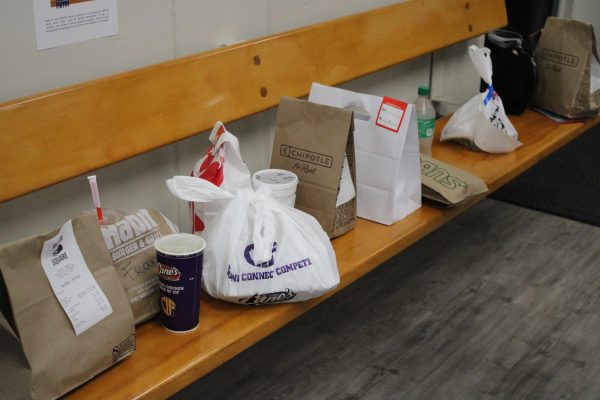
Students learn of this policy by word of mouth, she said.
Weinreich said he is aware of the lunchtime delivery situation but has not received any complaints from his staff to prompt him to put an end to this trend.
Similarly, high schools such as Troy High School and Fullerton Union High School have no policies against using online food delivery services to order meals to their campuses.
Besides theft, another complication Rains said she noticed was students leaving class before the bell rings to retrieve their food.
“It’s very disruptive if you have a student walking out of class to get food and then walking back into a class with food,” she said.
Students are now turned away if they arrive at Room 7 to retrieve their food at any time other than break or lunch.
Despite the issues involving stealing and leaving class early, one student said she faces problems regarding the platform she uses to deliver lunches.
In the 2023-2024 school year, Ciudadreal said she had issues with the app when she ordered from BobaTime, failing to realize they weren’t taking online orders at that time.
The sophomore said she was still able to place the order, but after she placed it, it was immediately canceled, and Ciudadreal went without food that day.
“I was a bit upset that [DoorDash] didn’t warn me while I was ordering,” she said. “But I ended up getting points in exchange for the inconvenience and just ordered it again using the points.”
However, many students still rely on food delivery as the most efficient way to satisfy their lunch cravings, including Newman.
“I prefer ordering [with] DoorDash because if I bring lunch to school, I would have to wake up earlier to pack it, and it wouldn’t be that fresh,” said Newman, who orders around five times a month. “And school lunch is kind of gross in my opinion.”
This story was originally published on The Accolade on April 11, 2025.

